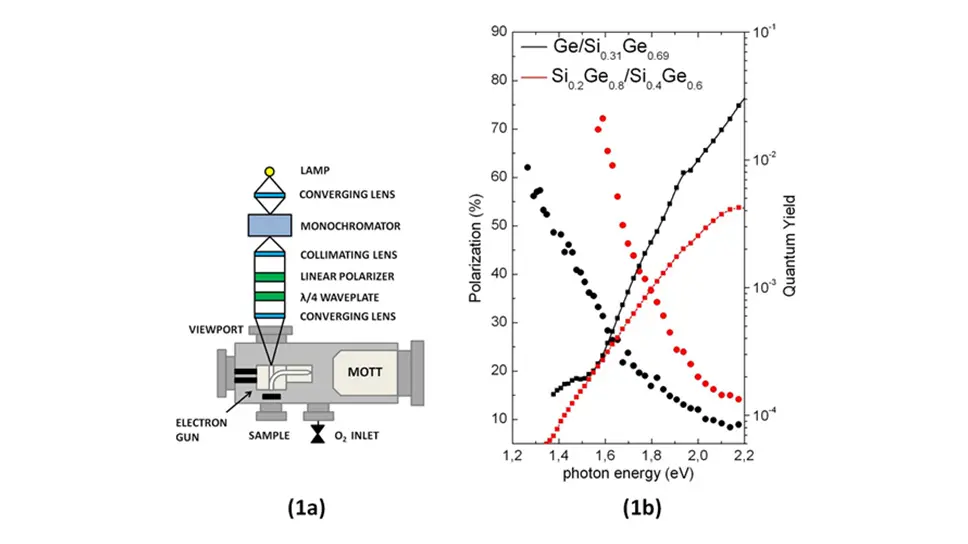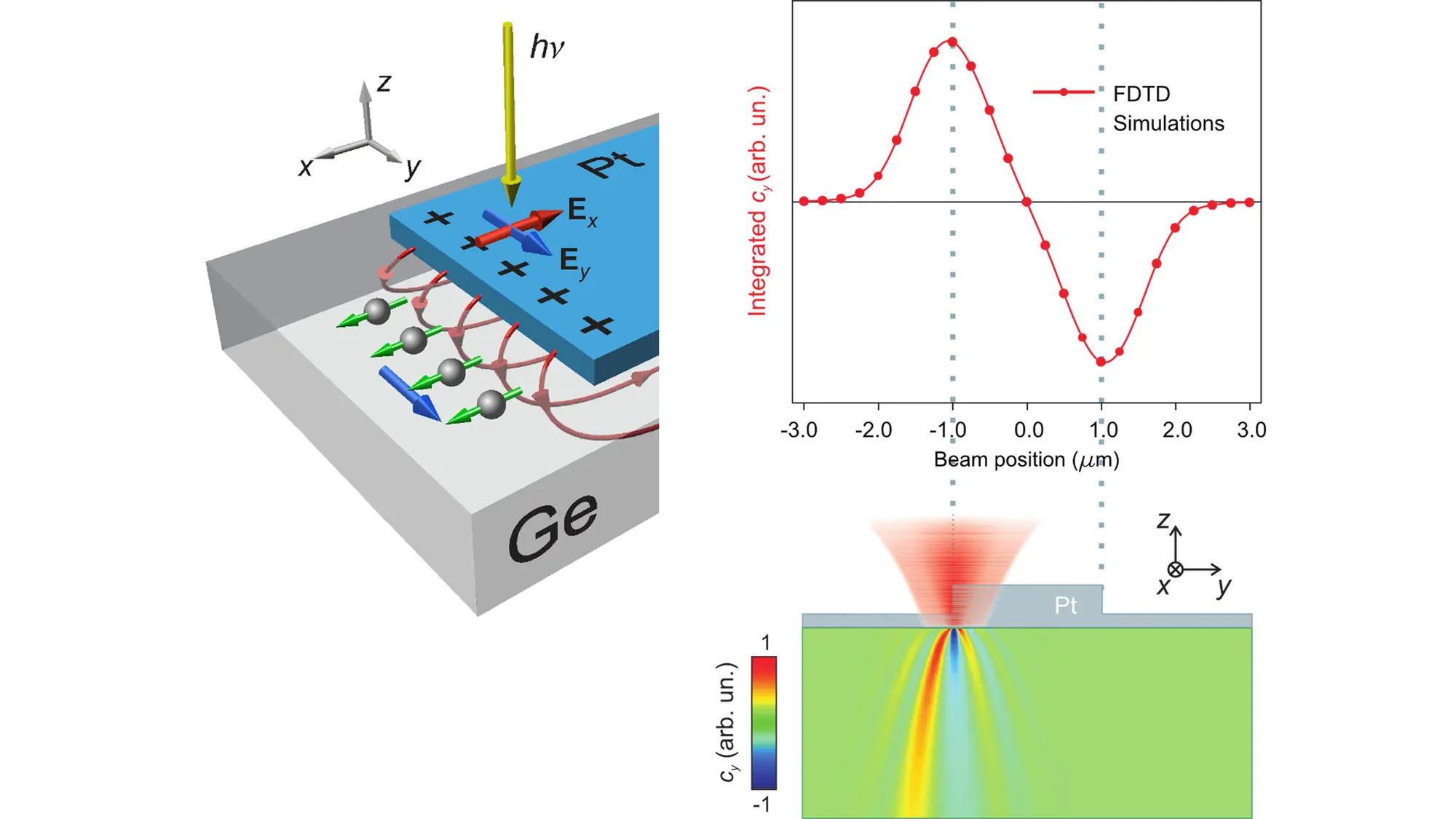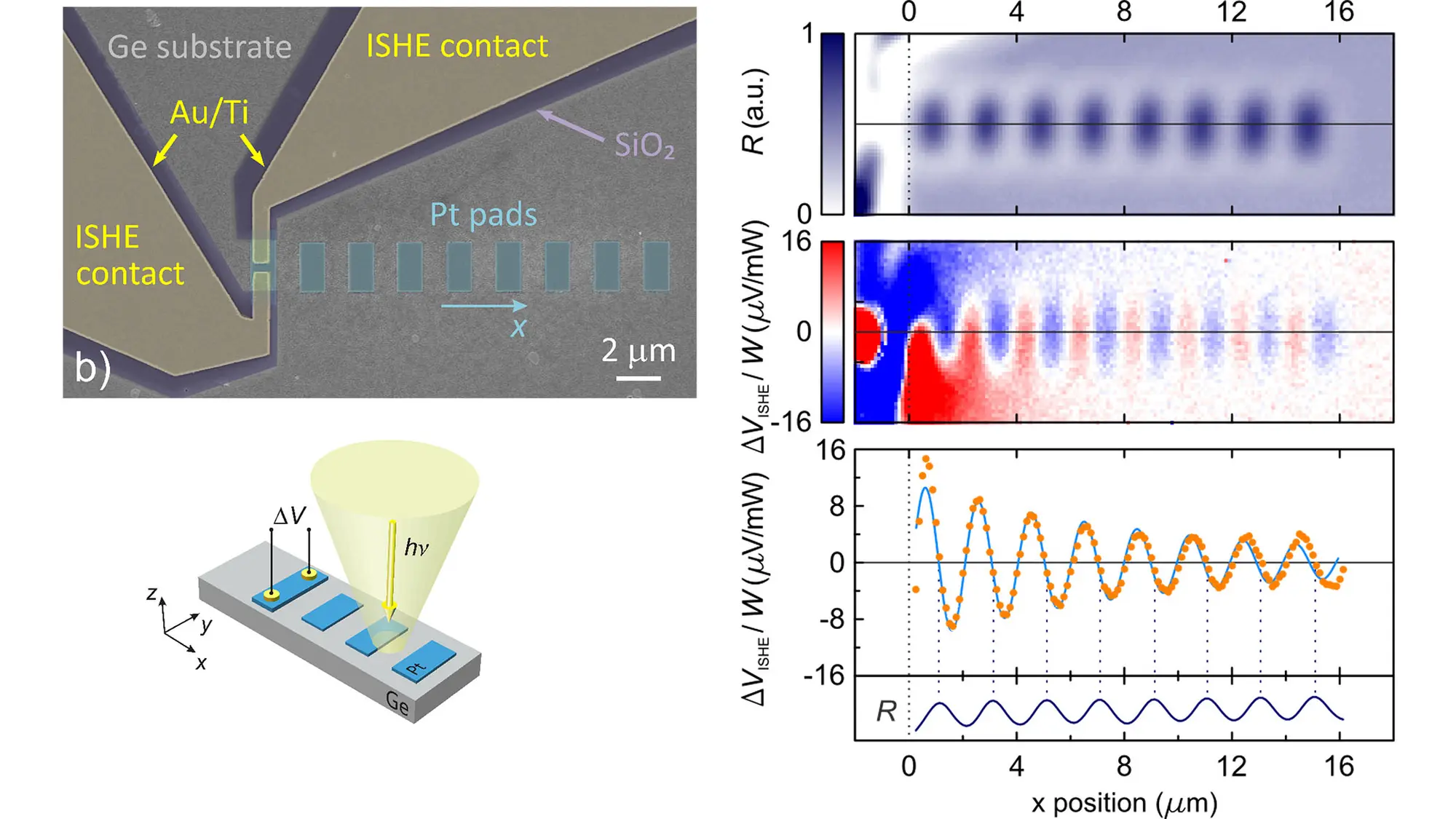SemiSpin
SemiSpin

The SemiSpin laboratory constitutes a new research branch of the Surface Physics group, entirely devoted to spintronics in group-IV heterostructures, low dimensional materials and topological insulator (TI)/semiconductors systems. Spin generation, transport and dynamics lie at the cutting edge of solid-state physics and semiconductors are prototypical systems to study spin-related phenomena due to their large spin-orbit coupling and long electron spin lifetime. In particular, experimental activities are focused on Ge-based spintronics, such as bulk and compressively-strained germanium, Ge/SiGe multiple quantum wells, bulk and compressively-strained SiGe alloys. Moreover, part of the experimental activity is also devoted to the study of spin currents in III-V semiconductor heterostructures. These studies are performed by applying electric bias, magnetic fields and changing the doping level of the semiconductor layer.
Spin generation is performed by means of the optical orientation technique. Dipole selection rules for optical transitions with circularly-polarized light allows generating a spin-oriented population of electrons (and eventually holes) in the conduction band (valence band) of semiconductors, such as GaAs, Ge, Si and their heterostructures. Optical spin injection is a versatile technique by which it is possible to reach electron (and hole) spin polarization up to 50% in bulk semiconductors and exploit band-engineering to inject spin-densities in buried nanostructures. Moreover, by patterning the semiconductor substrate with thin metal stripes, it also possible to inject spin-polarized carriers with a projection of the spin-polarization parallel to the sample plane (see Fig. 1).
Spin transport and dynamics are also studied by measuring spin currents in metal/semiconductor devices, topological insulators and two dimensional materials, such as graphene or transition metal dichalcogenides, eventually deposited on top of a semiconductor substrate. In this case, the semiconductor is used as spin current generator, whereas the metal (with large spin-orbit interaction), or TI, or the low dimensional materials are used as spin current detectors. The spin current, optically generated in the semiconductor, is converted into an electromotive field inside the detector by means of the Inverse Spin Hall Effect (ISHE) or the Inverse Rashba-Edelstein effect (IREE). The combination of optical orentation and ISHE (or IREE) allows designing non-local archtectures to study spin drift and diffusion, where spin is locally injected by means of a confocal setup at different positions with respect to the detection stage (see Fig. 2).
Selected publications:
- C. Zucchetti, F. Scali, P. Grassi, M. Bollani, L. Anzi, G. Isella, M. Finazzi, and F. Bottegoni, APL Mater. 11, 021102 (2023).
- C. Zucchetti, A. Marchionni, M. Bollani, F. Ciccacci, M. Finazzi, and F. Bottegoni, APL Mater. 10, 011102 (2022).
- T. Guillet,C. Zucchetti, A. Marchionni, A. Hallal, P. Biagioni, C. Vergnaud, A. Marty, H. Okuno, A. Masseboeuf, M. Finazzi, F. Ciccacci, M. Chshiev, F. Bottegoni, and M. Jamet, Phys. Rev. B 101, 184406 (2020).
- F. Bottegoni, C. Zucchetti, S. Dal Conte, J. Frigerio, E. Carpene, C. Vergnaud, M. Jamet, G. Isella, F. Ciccacci, G. Cerullo, and M. Finazzi, Phys. Rev. Lett. 118, 167402 (2017).
- C. Zucchetti, F. Bottegoni, C. Vergnaud, F. Ciccacci, G. Isella, L. Ghirardini, M. Celebrano, F. Rortais, A. Ferrari, A. Marty, M. Finazzi, and M. Jamet, Phys. Rev. B 96, 014403 (2017).
- F. Bottegoni, M. Celebrano, M. Bollani, P. Biagioni, G. Isella, F. Ciccacci, and M. Finazzi, Nature Materials 13, 790 (2014).
- F. Bottegoni, A. Ferrari, S. Cecchi, M. Finazzi, F. Ciccacci, and G. Isella, Appl. Phys. Lett. 102, 152411 (2013).


Progetti di ricerca
MOSES
Scopri di più